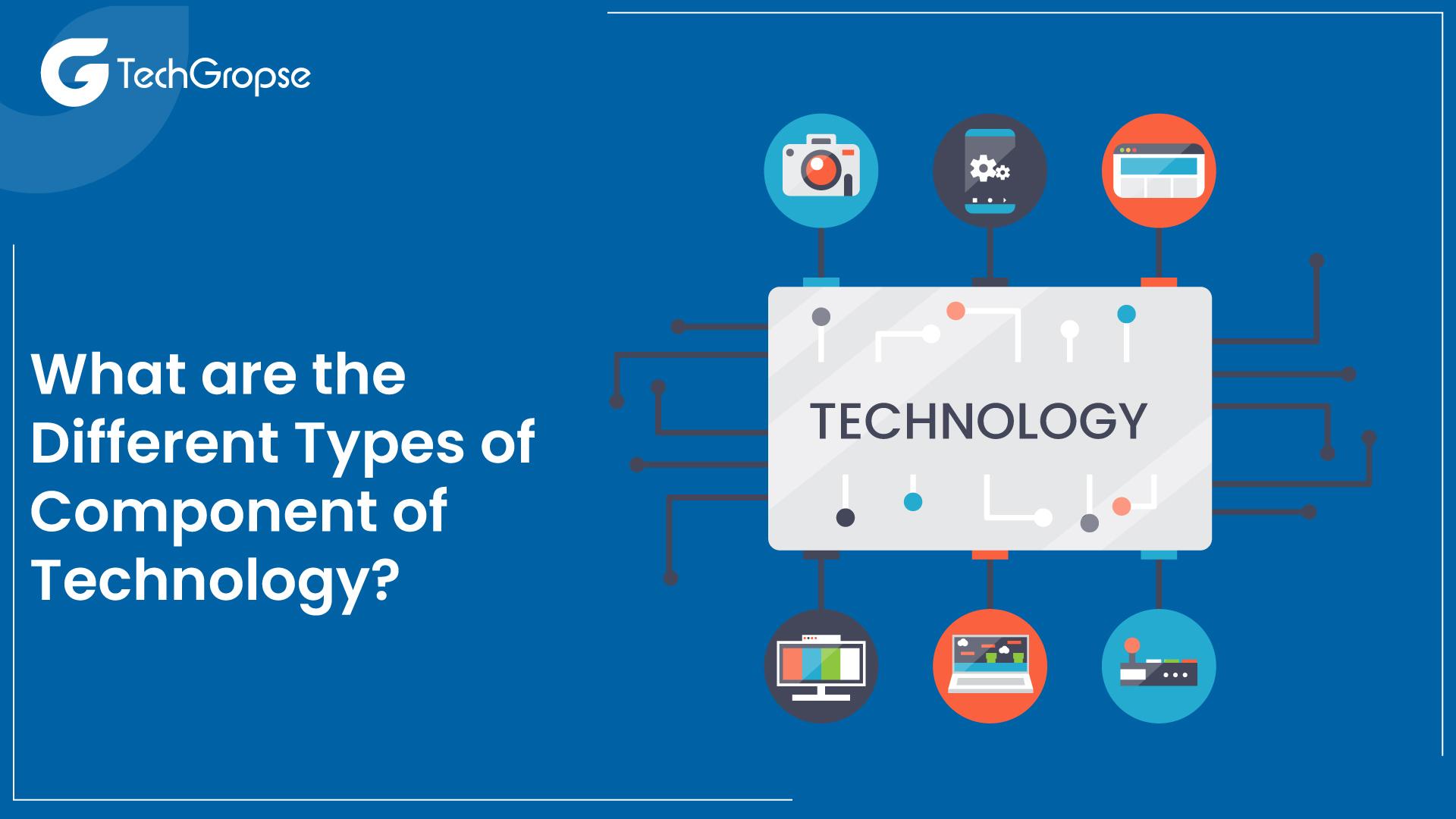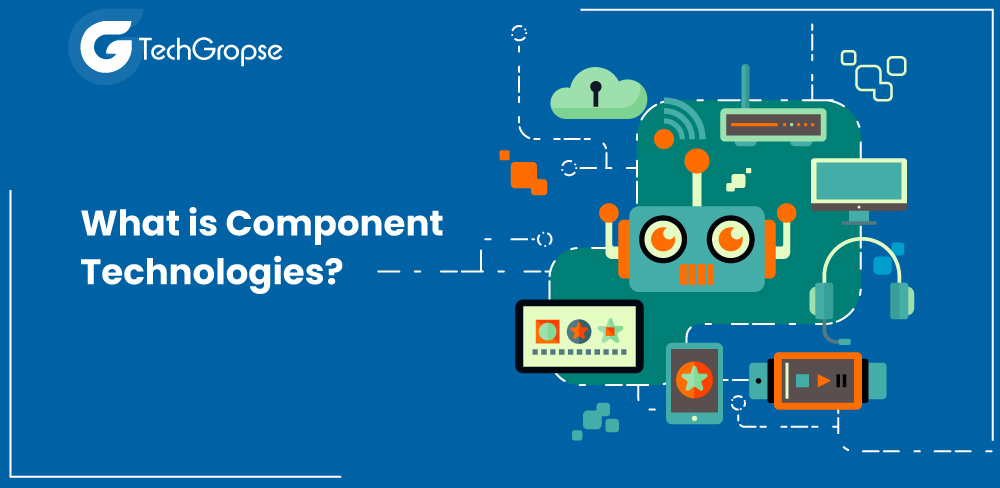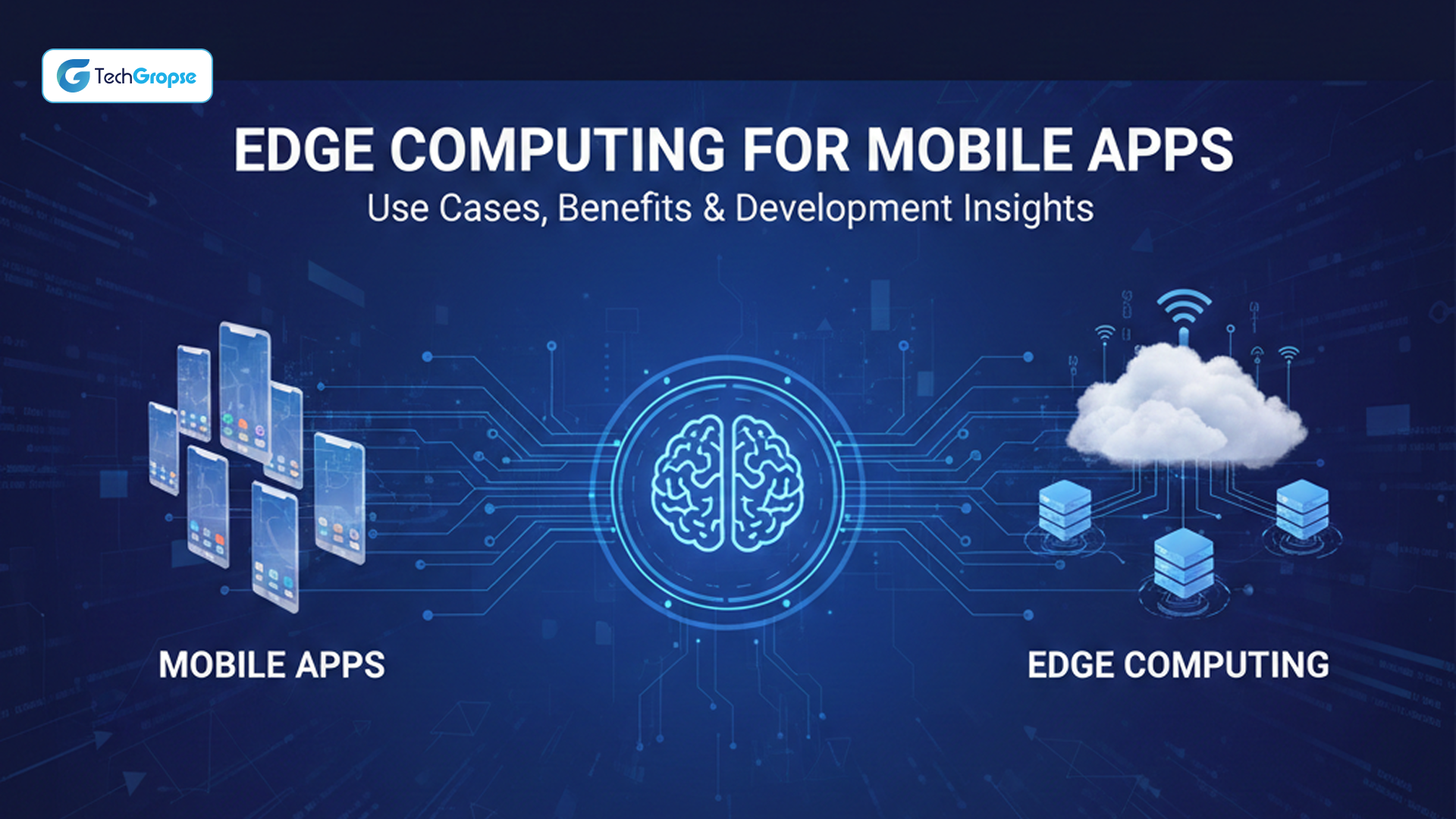Component technologies have become essential to modern software development. To leverage this approach for large-scale projects, businesses often partner with expert app development companies in uae.
These individual parts, or components, can be developed and tested independently and combined to create a complete system. These components can be easily integrated into various applications, making it easier for developers to create more complicated software with less code.
With component technologies, programming tasks such as debugging and testing are simplified, while the quality of the software is improved. This technology is perfect for building large-scale enterprise solutions or even small desktop applications.
The flexibility and efficiency of Component Technologies allow developers to optimize productivity through the use of libraries already developed by others.
In this complete guide on component technologies, we will explore the different types of component technologies, their advantages and disadvantages, and how to choose the right one for your project.
We will also discuss best practices for developing component-based systems, common challenges and solutions, and future trends and innovations in component technologies.
What are Components?
In the future, computer systems will be made by assembling various pieces of software that work together. These pieces of software could come from different companies, but they will all follow the same rules for how they talk to each other.
We will use special tools for these pieces together, and then that code will be put on whatever computer we want. These pieces of software are called “components.”
Components are business objects that have predefined and reusable behaviors. Implementation detail is hidden in the interfaces, which isolate and encapsulate a set of functionality.
An interface is a group of named operations that clients can gather. More importantly, well-defined interfaces define the component’s entry points, and its accessibility is done through its interface.
In a component-based approach, providers and clients can communicate with the help of the interface, which works like an intermediator that lets the two parties collaborate and work together.
Let’s understand by giving the below details:
- A component is an independent, application-level software unit developed for an individual purpose. Components are self-contained, pluggable abstract data types.
- Components are accessed via various interfaces. A component’s interface serves as the access point to its functionality. These interfaces may be implemented by objects internal to the component if the component developer so desires. However, interfaces may be implemented by a non-OO language.
- Only a single instance of a component is managed per system. If more than one client is using the functionality the component offers, various object references may be allocated to those clients. An object reference is a significant part of an object in a component that implements an interface.
- Component-comprised systems will feature components from various vendors. Components will be operable by conformance to industry-standard interfaces.
- Components will be enclosed and modular. Their internals can utilize inheritance for implementation reasons. This fact will remain an implementation detail, not visible to the component clients. Components may not be expanded by inheritance.
Must to know : Guide & Cost to develop Subway Surfers Like App
What is The Main Component of Technology?
Component technologies have taken the software development world by storm, turning monolithic applications into modular systems. Component technologies are software architectures allowing developers to assemble systems by assembling pre-built components or modules.
These modules are designed to perform specific functions and can be reused in various applications. Standardized interfaces make it easy to integrate components into a system, allowing for faster and more efficient development.
Related reading: custom app development company atlanta
The concept of component-based development has been around for several decades, dating back to the 1990s. However, in the early 2000s, component technologies started gaining mainstream adoption.
The evolution of components technology can be traced back to the Object-Oriented Programming (OOP) paradigm, which emphasized the creation of reusable software modules.
What are the Different Types of Libraries of Component Technologies?

Component technologies are programming languages, libraries, and frameworks developers use to create software applications. These technologies serve as building blocks that can be used to build complex applications.
Several types of component technologies exist, such as class libraries, framework libraries, component libraries, and more. Let’s understand one by one:
1. Class Libraries
Class libraries are collections of reusable code that developers can use to create mobile applications. They contain pre-written code designed to perform specific functions like handling user input, processing data, or developing reports. Class libraries can be used in many programming languages, making them a developer’s favorite choice.
2. Framework libraries
Framework libraries are similar to class libraries but offer a complete architecture for creating software applications. It is a software component for software development; it includes pre-written code and a set of protocols for organizing that code into a functional software application. Framework libraries are commonly used in web development, where they offer a set of rules for building web applications that are scalable and maintainable.
3. Component libraries
Component libraries are collections of software components that can be used to make larger software applications. They include pre-built modules like user interface controls, communication, and data processing modules. Component libraries are designed to simplify the development process by offering developers ready-made code that can be used to build complex applications quickly and efficiently. Overall, component technologies are essential for software development, as they deliver developers with tools and building blocks to create high-quality applications efficiently.
What are the Different Types of Components of Technology?
Several component technologies play an essential role in developing and creating software applications. These technologies are essential components of software systems and are responsible for a vast range of functionalities.
Let’s ready to discuss some of the essential component technologies, their benefits, and examples.
1. Application Programming Interfaces
Another component of technology is Application Programming Interfaces (APIs). APIs help developers build software by exposing the codes to other parties. These interfaces allow software systems to talk to each other and streamline the development process. Developers can use APIs to interact with an existing software system and do not have to understand the underlying source code.
Some examples of famous APIs include:
- Google Maps APIs
- Stripe APIs
- Twitter APIs
2. Object-Oriented Programming (OOP)
OOP is a popular programming language that helps developers build software using objects that have both data and behavior. Objects in OOP can interact with each other to deliver outcomes, and they encapsulate various functionalities that are needed for the software. OOP makes it easy for developers to modify and maintain software systems and offers a high level of abstraction.
Some famous languages that use OOP principles include
- Java
- C++
- Python
3. Component Object Model
COM is a Microsoft technology that allows software components to communicate with each other in Windows operating systems. COM is used to build reusable components that can be used across various software systems. It is a binary interface standard that allows additional software components to interact with each other, regardless of their programming languages. COM components can also be combined to create complex software systems.
Some examples of software systems that use COM include
- Microsoft Office
- DirectX
- Internet Explorer
4. Service-Oriented Architecture
SOA is an architecture that allows software systems to interact with each other using web services. SOA is based on the principles of breaking down software components into functional units, and these available units are then exposed as web services. SOA delivers high interoperability between various software systems and makes it easier for software systems to be improved and modified independently.
Some examples of popular web services include
- Amazon Web Services
- Google Cloud Platform
- Microsoft Azure
5. Microservices
Microservices is a new architecture based on breaking down software systems into small and independent components that can work together. Microservices deliver high flexibility, scalability, and modularity, making it easy for developers to modify and maintain software systems. Microservices also provide fault tolerance and high availability to software systems.
Some examples of companies that use microservices include
- Netflix
- Amazon
- Uber
Best Practices for Developing Component-Based Systems
Component-based systems are quickly attaining popularity due to their inherent modularity and scalability. However, building these systems can be challenging.
Here are some best practices for developing component-based systems:
1. Design Principles for Component-Based Systems
- Develop components that are independent, reusable, and replaceable.
- Use popular interfaces and contracts for components to ensure compatibility.
- Use the right level of abstraction to hide the complexity of the components from the rest of the system.
2. Development Strategies for Component-Based Systems
- Use a component model, such as OSGi or COM, to manage the lifecycle of components.
- Develop and test components independently before integrating them into the system.
- Use dependency injection to manage component dependencies and improve flexibility.
3. Testing and Maintenance of Component-Based Systems
- Use automated testing to ensure that components work correctly.
- Monitor the system for errors and performance issues using appropriate tools.
- Plan for component updates and replacements to ensure long-term maintainability.
Related reading: app development company Chicago
Common Challenges and Solutions for Implementing Component Technologies
Implementing component repair technologies in a system can come with its challenges. Here are some common issues and solutions:
1. Issues with Component Integration
- Components may not always be compatible with each other.
- Conflicts can arise when multiple components depend on the same resources.
2. Complexity in Component-Based Systems
- Component-based systems can become complex and challenging to manage as more components are added.
- Dependencies between components can become difficult to manage.
3. Approaches to Addressing Common Challenges
- Use a standardized component model to ensure compatibility between components.
- Use dependency injection to manage dependencies between components.
- Use a modular architecture to reduce complexity and improve maintainability.
Advantages of Using Component Technologies
Component technologies refer to software development paradigms whereby application structures are created by separating functionality into independent, modular, reusable components. These components can then integrate with other applications or systems to develop a complete software solution. Advancements in component technologies have revolutionized the software industry in various ways.
1. Save Your Time
Firstly, component technologies deliver faster time-to-market for software applications as developers don’t have to start with every new project from scratch. The modular nature of components allows developers to select existing ones and use them in their applications, thus shortening the development timeline.
2. Reusability
Component technologies promote code reuse across various applications, increasing efficiency in the development process. Reusing software components minimizes code duplication, maintains consistency in the application, and saves developers significant amounts of time, effort, and resources. Code reuse and consistency of software components also improve quality, efficiency, and maintainability. It ensures that software projects can be easily upgraded or extended over time.
3. Improve flexibility
The use of component technologies increases flexibility in software development. Applications built using modular components can easily conform to changing business needs, which means developers can modify one component without affecting the entire application.
4. Better Collaboration
Component technologies promote better collaboration among developers. This is why leading mobile app development companies dubai prioritize these strategies when working on large, complicated applications or systems.
5. Scalability
Finally, component technologies offer better scalability in software applications. Components can be added or removed from a software application without substantial changes to the overall system. As software needs change, it is easy to add new features and scale a software application up or down depending on the changing requirements.
Disadvantages of Component Technologies
In the modern era of technology, software development has become an essential aspect of businesses. Component technologies are gaining popularity in recent years as they offer developers the flexibility to build complex applications quickly using pre-built software components.
However, as with any technology, there are some disadvantages that organizations should consider before implementing these technologies.
1. High Cost
First and foremost, one of the most significant disadvantages of component technologies is their high cost. A reliable App development company can strategically manage these costs by choosing the most efficient open-source or proprietary components.
2. Complexity
Another significant disadvantage of component technologies is that they can significantly increase the application’s complexity. Managing these components’ updates and compatibility can be challenging with various pre-built components from multiple vendors. Additionally, software components used in the development process should be aligned with the system’s architecture and compatible.
3. Performance
Component technologies have a significant impact on an application’s performance. Pre-built components are designed to be generic and flexible and can serve many customers with different needs. However, having too many components in an application can improve its overall size, leading to slow performance for mobile applications.
4. Security
Fourthly, security is another major disadvantage of component technologies. One of the significant risks of using pre-built components is that they may contain hidden vulnerabilities or backdoors that cybercriminals can exploit. Moreover, since the components come from multiple vendors and have inconsistent security measures, ensuring they are fully secured can take time.
5. Dependency
Lastly, the dependency on vendors is another significant challenge associated with component technologies. Companies using pre-built software components may face issues like vendor lock-in, where they become dependent on the vendors, making it difficult for them to switch to a new vendor as the components are hard to replace, and the company is locked into the vendor’s ecosystem.
Future Trends and Innovations in Component Technologies
Component technologies are constantly evolving. Here are some emerging trends and innovations to look out for:
- Microservices architecture, which uses small, independent components to build large systems.
- Serverless computing allows developers to write and deploy code without worrying about the underlying infrastructure.
- Continued improvement in the compatibility and interoperability of components.
- The development of new component models and programming paradigms.
- Artificial intelligence and machine learning are used to automate the creation and integration of components.
Final Thought
Component technologies provide a powerful solution for building scalable, maintainable, and efficient software systems. By leveraging the benefits of component technologies, developers can make applications easier to test, debug, and maintain.
However, it is essential to consider the pros and cons of various component technologies, choose the right one for your project, and follow best practices for developing and integrating these components.
As the world of software development continues to evolve, so will component technologies. By staying informed about occurring trends and innovations, developers can stay ahead of the curve and continue to create efficient and effective software systems.
FAQ: What is Component Technologies
1. What are Component Technologies?
Component technologies refer to building software systems by breaking them down into smaller, more manageable parts. These individual parts or components can be developed and tested independently and combined to create the complete system.
2. What are the Benefits of Component Technologies?
Component technologies provide benefits, including increased reusability, easier testing and debugging, and improved scalability and maintainability. By breaking down a more extensive system into smaller components, developers can create more modular and flexible applications that are easier to modify and update.
3. What are the Different Types of Component Technologies?
Various types of component technologies exist, including object-oriented programming, service-oriented architecture, and microservices. Each type of technology has its advantages and disadvantages, and the choice of technology depends on the project’s specific needs.
4. What are the Common Challenges When Implementing Component Technologies?
Common challenges when implementing component technologies include issues with component integration, complexity in component-based systems, and difficulties with versioning and dependencies. However, these challenges can be addressed effectively by following best practices and using the right tools.













